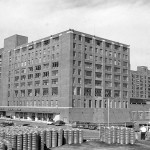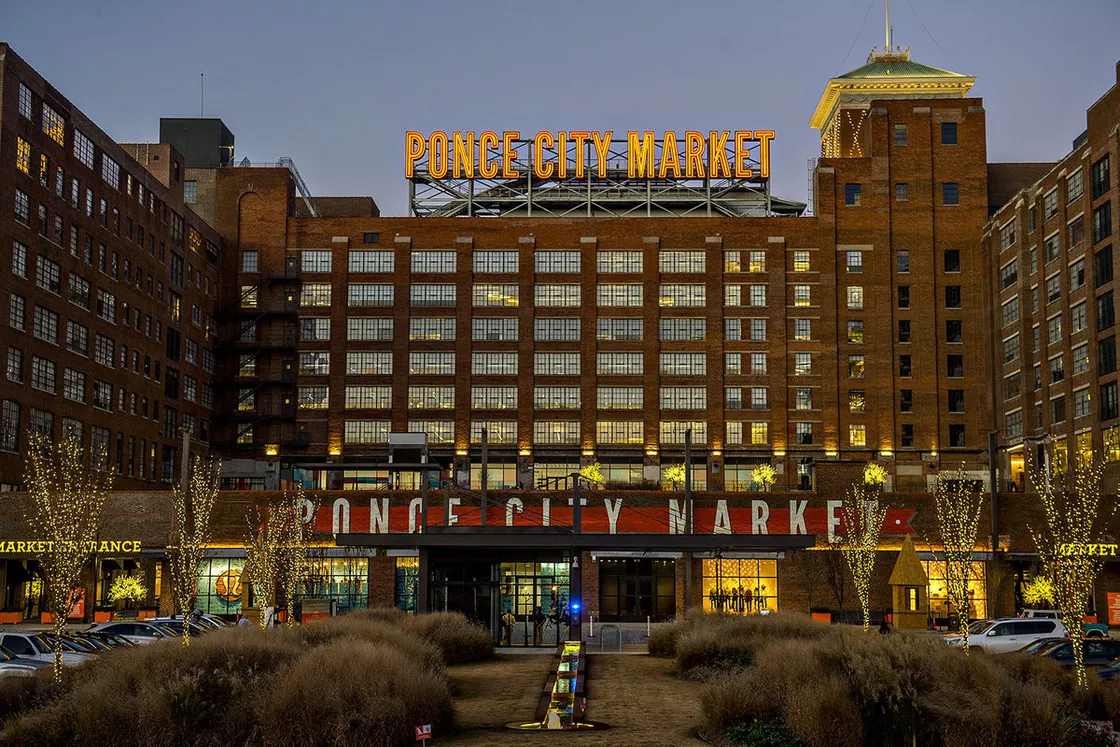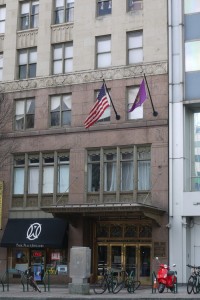trouble in urban paradise
Why buy a brand new car if you can just as easily buy it used? Why purchase new clothing if it can just as easily be thrifted? This basic principle of consignment stores and used car dealerships can be universally applied to most situations. As areas across Atlanta, like the neighborhoods surrounding the former Turner Field and even parts of Old Fourth Ward and Cabbagetown, are
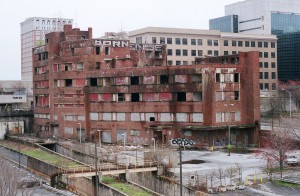
gentrified and activity moves away from other areas, many buildings are abandoned, creating social, political, and economic disparity. This not only leads to increased crime rates in these areas, but a clear cultural gap between those living in the newly developed parts of town and those living in the neglected and impoverished areas. In essence, these areas die. The solution, of course, is to breathe new life into these areas, but how can this be done? Why construct an entirely new building when it could just as easily be adapted for reuse?
the Death of a city
Once dubbed the “poster child” for urban sprawl, Atlanta’s growth has remained unmatched by any other city in the southeast, and the city doesn’t exactly have a sentimental track record when it comes to old buildings. Rather than preserve their ancient landmarks, the city often opts to tear down its antique buildings, resulting in a skyline devoid of class and a city more or less devoid of history (Trubey).
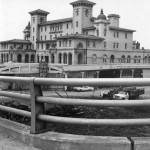
Countless historic buildings in Atlanta have simply been bulldozed in order to make way for the city’s voracious appetite for development. One of many examples of beautiful buildings lost to time and demolition, the Atlanta Terminal Station, which opened
in 1905 and served several railroads, was raised in order to build the Richard B. Russel Federal building, pictured above. The destruction of buildings like Terminal Station, a monument to
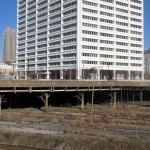
Atlanta’s history as a railroad town, make the city suffer culturally. Imagine the time, resources, and history that might have been preserved if this station had been adapted for reuse, or if another older building, of which Atlanta had no shortage at the time of its construction, had been chosen to house the Russel Federal Building.
resurrection
Adaptive reuse is a viable solution for the problems listed above. It saves money on construction costs, it’s better for the environment by eliminating waste and the resources used that would otherwise be used to operate machinery, it preserves the character of historic areas and buildings if done correctly, it reduces urban sprawl by making use of land that would otherwise be abandoned and allotting that space for other buildings, and it promotes sustainable development.
According the Atlanta Business Chronicle, “adaptive reuse in the redevelopment of an old building for a purpose other than its intended use,” and as of late, this practice has become an attractive–and affordable–alternative to construction from the ground-up (Pinkham). Older buildings represent an important resource culturally, historically, and economically–and this is a resource that is not renewable. Yet, in order to make way parking garages and nondescript skyscrapers, hundreds of historic buildings have met the same fate–demolition. This is largely due to the belief of banks and developers that price of renovating these buildings is too high. It is widely acknowledged by developers that starting from scratch, whether it is on an empty plot or at the cost of a beautiful old buildings, is the way to go. There is, however, a light at the end of the tunnel. A few reputable architecture firms and developers have invested in adaptive reuse, and the cities in which they work have reaped the benefits of urban renewal that often surrounds these projects. Many buildings, like Atlanta’s Sears, Roebuck & Co., now Ponce City Market, are not only candidates for adaptive reuse, but become key sites in “renewal schemes,” like the recent revitalization of the Old Fourth Ward neighborhood (Shipley).
Beyond cost savings, the neighborhoods surrounding adaptive reuse projects typically feature a unique character, charm, and authenticity. Often located near public attractions, they provide visitors with a unique social experiences that are not typically associated with urban landscapes. As more and more people regain a taste for urban living and move back from the suburbs into redeveloped cities, says the Atlanta Business Chronicle, many are attracted to older buildings that maintain an element of history and distinctive character that simply doesn’t exist in brand new, clinically clean apartments and condos. In contrast to what developers have pushed in the past, these living spaces often command above market rents (Pinkham). Local examples of this phenomenon in the William Oliver Building and the Healey Building, both located in the Fairlie-Poplar Historic District of Downtown Atlanta. These buildings both originated as offices in the new “fire-proof” district.
The benefits and Drawbacks
While there is a growing acceptance that adaptive reuse can be used as a strategy to meet the needs the owners and occupants of buildings, whether or not the process is truly beneficial is still debated. Studies by Elison concluded that refurbishing a building to meet the standards need to make a significant impact on environment sustainability is on average 12% more expensive than a standard demolition and reconstruction project. Similar studies concluded the exact opposite–the cost of reusing buildings is lower than the cost of a standard demolition (Bullen). According to interviews and surveys conducted by Shipley, among the benefits of adaptive reuse are the preservation of the “special character” of the building, possible government incentives, and the returns on investments. Other basic benefits include the aforementioned savings of construction costs, and the Some of the constraints on older building use include uncertainty and site remediation, building codes, lack of the needed professional experience and skills to properly execute a project like this, and finally, parking (Shipley).
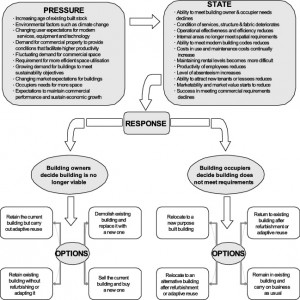
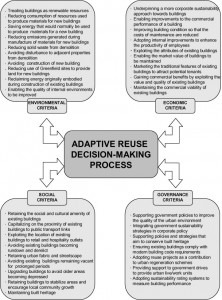
Experts take a number of things into consideration before deciding whether a building should be adapted for reuse, which is detailed in Fig. 2 including the viability of the building, which is determined is detailed in Fig. 1 (Bullen).
Living or Dead?
In conclusion, the benefits of adaptive reuse, whatever the cost, far outweigh the drawbacks. When areas of historic significance fall into disrepair, the community silently itches to restore them, as made evident by the popularity and appreciation of places like Ponce City Market and the transitioning Fairlie-Poplar District. Rather than being known for the destruction of sites of cultural and historical significance, Atlanta should be known for their revitalization and preservation.
Works Cited
Bullen, Peter A., and Peter E.D. Love. “The Rhetoric of Adaptive Reuse or Reality of Demolition: Views from the Field.” Cities 27.4 (2010): 215-24. Science Direct. Web. 8 Dec. 2016.
Pinkham, Charles. “Adaptive Reuse Projects Are All around Us.” Biz Journals. The Atlanta Business Chronicle, 2 Oct. 2014. Web. 08 Dec. 2016.
Shipley, Robert, Steve Utz, and Michael Parsons. “Does Adaptive Reuse Pay? A Study of the Business of Building Renovation in Ontario, Canada.” International Journal of Heritage Studies 12.6 (2006): 505-20. Taylor and Francis Online. Routledge, 24 Nov. 2006. Web. 08 Dec. 2016.
Trubey, J. Scott. “Is Downtown Atlanta Going Adaptive Reuse? | The Biz Beat Blog.” The Biz Beat Blog. The Atlanta Journal Constitution, 1 Mar. 2016. Web. 08 Dec. 2016.
